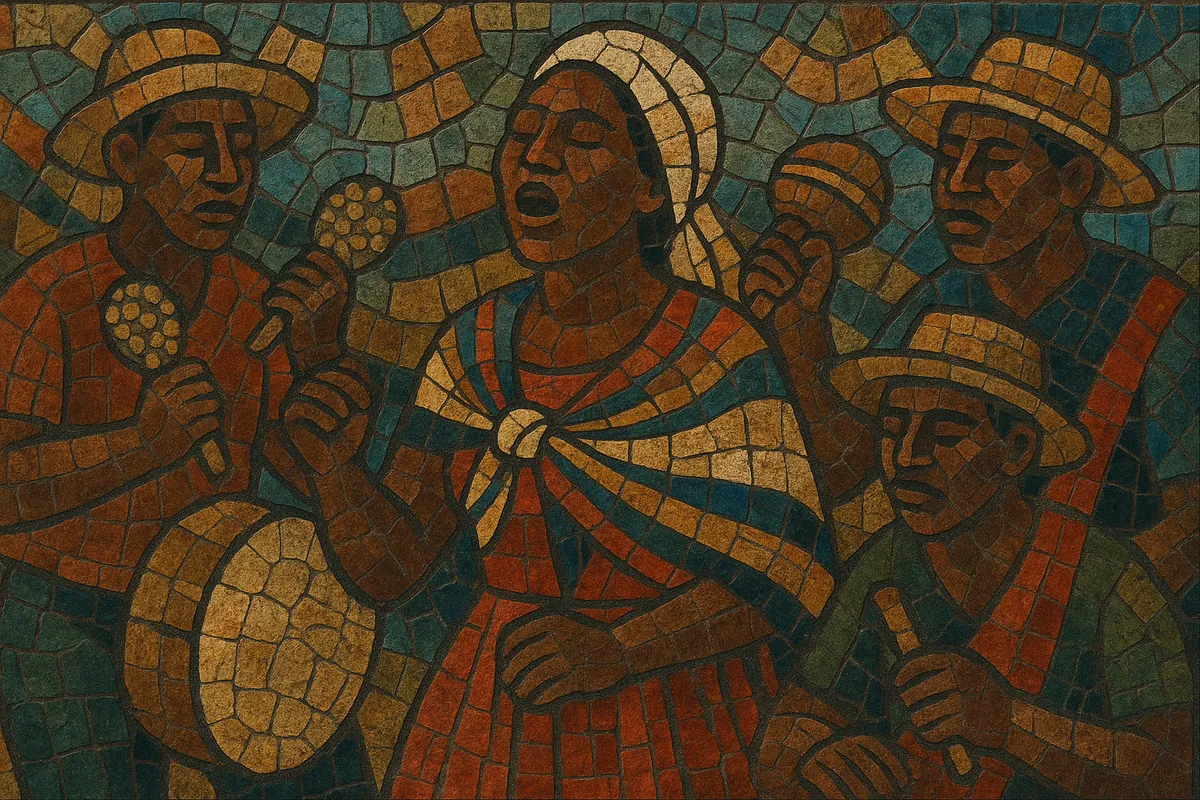Saya afroboliviana is a communal Afro-diasporic music and dance tradition from the Yungas valleys of Bolivia. It combines interlocking drum patterns, metal and seed shakers, and antiphonal (call-and-response) singing led by a caller with a responding chorus.
The music is march-like yet sinuous, typically in duple meter with a steady bombo (bass drum) pulse, syncopated snare figures, and dense shaker textures. Lyrics—often in Spanish with Aymara influence—speak about daily life, labor, community, faith, and Afro-Bolivian identity. Performance is inseparable from dance: singers and percussionists advance in procession, embodying collective memory and pride.
Saya afroboliviana emerged among enslaved Africans and their descendants who were brought to the Yungas region of Bolivia during the colonial period. In the isolation of the valleys, communities preserved African-derived drumming, antiphonal singing, and processional dancing, adapting them to local contexts and languages.
Villages such as Tocaña, Mururata, Chijchipa, Chicaloma, Coroico, and Irupana maintained saya as a living communal practice linked to agricultural cycles, religious festivities, and community gatherings. The tradition’s instrumentation—large bombo drums, smaller snare-like drums, metal tube shakers (guanchas), chajchas (goat-hoof rattles), and voices—remained central, while melodies reflected both Afro-diasporic and Andean contours.
In the late 20th century, Afro-Bolivian cultural activists and community ensembles elevated saya’s public profile. Organizations such as the Movimiento Cultural Saya Afroboliviana (MOCUSABOL) fostered visibility through performance, workshops, and cultural education, connecting saya with broader Afro-Latin and Bolivian audiences and asserting Afro-Bolivian identity in the national cultural landscape.
Today, saya afroboliviana is recognized as a key expression of Afro-Bolivian heritage. It has inspired popular and folkloric adaptations across Bolivia, and its processional format, call-and-response vocals, and percussive drive continue to embody cultural endurance, community solidarity, and pride.


